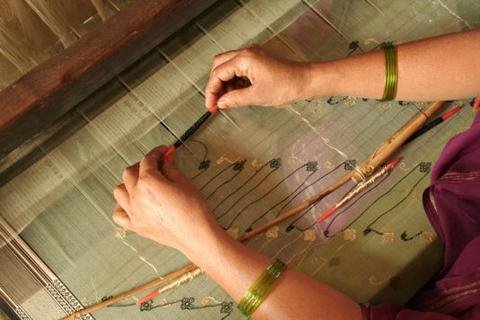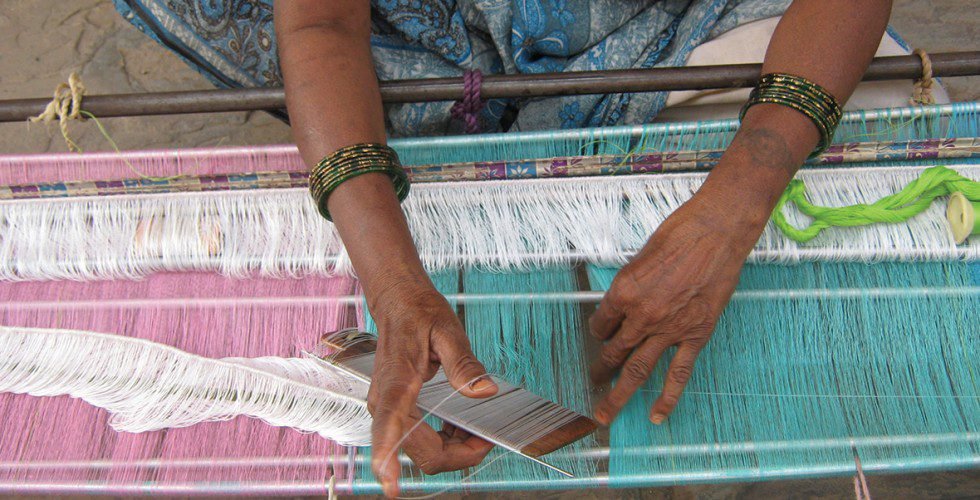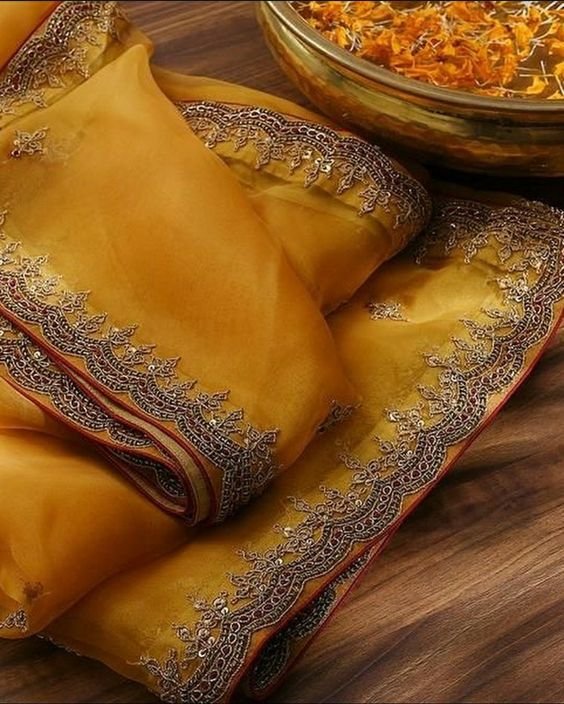Chanderi Silk – Weaving the Intricacies of a legacy

Chanderi is mentioned for its lightweight, vivid, and glossy texture. The phrase Chanderi is derived from a small city in Madhya Pradesh additionally called ‘Chanderi’. Chanderi sarees are primarily popular among Marwari women and are also favoured in West Bengal for their white and darkish colour.

India has the richest way of life with woven textiles with one-of-a-kind fabric and techniques. It has its unfavourable style method of weaving design. Possibly no other country may want to provide so many versions of the design in textiles. Inside the Gwalior district, Guna, a lovely and growing metropolis, is thought for Chanderi. 225 km faraway from Gwalior name Scindias patronized the Chanderi saree weaving enterprise. In 1922 Madhavrao Sindhiyas the king of Gwalior visited Chanderi and held the weavers. In 1939 after the second one world warfare the king took over the obligation and the artwork survived. These fabrics are specifically used for weaving salwar kameez and sarees but Chanderi fabrics are maximally desired in Indian ethnic and traditional attires.

According to Indian mythology, this cloth has its beginning inside the Vedic period of conventional Mahabharata, but the history of Chanderi sarees can be seen from the 13th or 14th century. It is believed that shishupal the cousin of lord krishna has determined it.
In the 1305 advert, whilst the Sufi sent Hazrat Wajihuddin reached Chanderi and a huge variety of people migrated from Lakhnauti reason of Bengal to Chanderi. Lakhnauti changed into the older call of the Gaur area in Bengal. Bengal and specially Dhaka were known for weaving fine muslin cloth in the course of that time, folks who migrated to Chanderi started weaving and the production of fabric. Most of the people of Chanderi weavers belong to the Muslim community. After 1350 a large number of people from Jhansi migrated to Chanderi and started their livelihood. But, the evolution period of fabric started during the 19th century here the weavers living in Chanderi replaced handspun yarn with mill-made yarn.
By way of the end of the nineteenth century, new weaving tools had been added. At the beginning of the early twentieth century, Scindia’s royal circle of relatives patronised Chanderi for their splendour. Chanderi turned into brought with a golden thread during those time. It became first followed as the Muslin cotton saree, which has become very famous in many of the Mughal areas and reached new heights and has become the famous preference of a few of the Indian queens. In 1930 Japanese silk turned located with the aid of the weaver of Madhya Pradesh this event provide the start to Chanderi silk which soon replaced the cotton saree. There are 3 different criteria for Chanderi fabric Chanderi silk cotton, pure cotton and Chanderi cotton. Those Chanderi fabrics are woven via the usage of handspun cotton warp and weft.

The designs of first painted on the plane sheet in the required colouration and then converted on a photograph paper this graph paper is known as naksha or talim. The grasp weaver suggests the layout according to the likes and dislikes of the client. The fabric is the weave of ‘tana’ that is the wrap or the lengthwise, a stretched-out set of thread through which the ‘bana’ or the weft is woven backwards and forward.
Silk and gold are combined inside the body of the sarees the border however is generally made of golden thread. The looms used are the fly go back and forth, and the 3 trip techniques which required weavers at the loom the approach may be very vintage and has given manner to the most common throw-close-up trip. The entire saree is woven in a plain weave. Chanderi saree is given a calendar within the process for completing with a kundi beating down over a timber block with a mallet which makes the wrap and weft more compact and gives the vivid surface. The different kinds of saree produced at Chanderi are;

Asavali: it’s been famous for more than a hundred years made of the extremely best cotton and gold sarees, the layout paperwork is linear and undergoes a close resemblance to the marble located in the Mughal structure.
Double chashmee: the saree has a border of an exclusive colour Ganga Jamuna the frame of the saree is of cotton and with Satin silk woven borders, such sarees are bought in Baroda to Sri Manibhai.
Plain pot: it’s by far the cheapest saree because it does not have any motifs or layout even on the border.
Patal: patal is a bridal saree that’s only allowed to path at the floor and permits a protracted ghunghat over the face which is 54 width.

Jamdani: it has throughout effect and most highly-priced of all chanderies beginning from rupees 4000 to 5000.
GolPatti: it has a totally slim golden border.
Dandidar: it has a golden pillar inside the pallav.
Nal Phorva: it has a complex border oven essentially on silk history and is attached to the body of the saree.
Kathan: this saree is different from the rest as one series of yarn is tremendous to visited silk Yarn which gives a fluffiness to the complex saree on the opposite series of yarn is ordinary twisted silk Yarn.

There may be a chunk variety of motifs utilized in Chanderi sarees, summer season inspired via nature, golden cash add-ons, flowers and leaves, dot mango, walnut and extended with geometrical motifs are also seen in the saree. Chanderi saree or mostly found in pastel colouration which includes purple, sky blue, off-white and peach is additionally used to showcase the tradition. Decide that the principal colourings are saffron, light grape green, peacock blue-green, Henna green, sap green, Torquoise, Indian red, reddish mauve and purplish brown.

The government of India has determined to revive the conventional artwork form with the aid of forming a cooperative and imparting raw materials to the weavers at a cheaper charge and also delivering looms to the weaver at a very low hobby. Only because of these reasons the Chanderi saree industry remains alive. Chanderi has been protected by India as a geographic indication with a specific geographical beginning which has certain characteristics because of the location they have originated from. India has petitioned the arena change employer for the recognition of Chanderi as a gi product on the global stage additionally.


